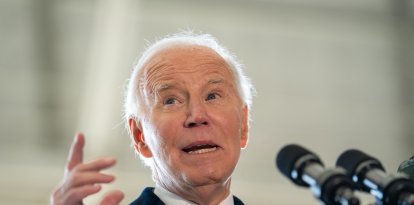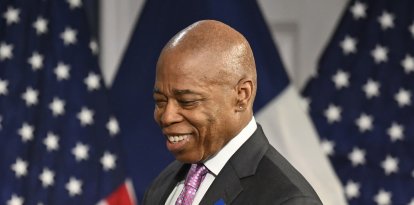The Senate goes ahead and launches a proposal to avoid closure of the Government: Funds for Ukraine, extension of the deadline and nothing for the border
The Upper House voted Tuesday to advance a short-term funding measure, putting even more pressure on the House of Representatives.

Wikimedia Commons
Tired of the comings and goings of the House of Representatives, the Senate advanced its proposal on Tuesday to avoid a government shutdown. Details of the proposed short-term financing plan were kept secret until hours before the vote, which ended 72-18 in favor of moving the project forward. The result places the Senate one step away from approving the continuing resolution (CR) that is needed so that the Government does not close on October 1.
The Senate's bipartisan plan is 79 pages long and was surprising because it is usually the House that initiates financing projects. However, given the division between Kevin McCarthy and the conservatives, who have not reached an agreement for days, the senators decided to put their own proposal on the table. The procedural vote, which enables or disqualifies the text from reaching the Senate floor, ended with 72 votes in favor and 18 against.
What does the Senate proposal say to avoid a government shutdown?
With Republican and Democratic collaboration, it would extend the government's funding deadline until November 17, which would give lawmakers a month and a half to negotiate.
In addition, it would allocate approximately $6.15 billion in funds to Ukraine and another $5.99 billion to respond to possible natural disasters. The text also includes $4.5 billion from an Operations and Maintenance fund, so that the Department of Defense “remains available until September 30, 2024, to respond to the situation in Ukraine.”
The proposal does not include extra money for the border and would temporarily stretch the authority of the Federal Aviation Administration, which is scheduled to expire soon.
"A bridge towards cooperation and away from extremism"
The Senate leadership celebrated the proposal, showing that its members did not look very favorably on an eventual government shutdown. Chuck Schumer (D-NY), Democratic Majority Leader, assured that "this bipartisan CR is a temporary solution, a bridge toward cooperation and away from extremism. And it will allow us to keep working to fully fund the federal government and spare American families the pain of a shutdown.”
Although he clarified that the project does not reflect "everything that both parties want. It will continue to fund the government at present levels, while maintaining our commitment to Ukraine's security and humanitarian needs, while also ensuring that those impacted by natural disasters across the country begin to receive the resources they need."
Finally, he highlighted the positive characteristics of the Senate initiative, highlighting above all the cooperation of both parties in its drafting. "The Senate CR is a good sensible and bipartisan – let me emphasize – bipartisan bill."
On the other side, Mitch McConnell (R-KY) expressed himself along the same lines. The veteran senator also highlighted that this is a temporary solution, one that would serve to avoid the scenario of a closed government. As he declared days ago, a scenario that does not favor the Republicans politically.
"The clearest path is a standard short-term resolution. Our work this week needs to produce the resources and flexibility to maintain essential functions of Government at their current rates of operation, while making progress on year-round appropriations." continues," he said.
"In order to work on appropriations, to continue without interruption, Congress needs to extend government funding later this week. The sooner Congress keeps the light on, the sooner these important conversations can resume," McConnell added.
What does a government shutdown mean?
The United States decides how to spend public money year after year when Congress passes what is called the Appropriations Bill. The deadline that legislators have to agree is October 1. If there is no approved text by then, the Federal Government shuts down.
The logic comes from the National Constitution, specifically from Article 1, Section 9: “Money will not be taken from the Treasury but in Consequence of Appropriations made by Law; and a regular Statement and Account of the Income and Expenditure of all the public Money shall be published from time to time.”
Once closure is reached, certain agencies directly stop functioning. Its employees cannot work and their pay is withheld until Capitol Hill agrees. So far, the longest shutdown in history was in 2019, when it took 35 days until everything was back to normal. It is estimated that 800,000 public employees did not receive their money during that period of time.
One of the most remembered scenes of that closure occurred when Donald Trump, then president, had to receive the Clemson University football team, which had recently won the National College Football Championship. Since employees couldn't work, the president used his own money and bought food from McDonald's, Wendy's, and Burger King.
RECOMMENDATION





















